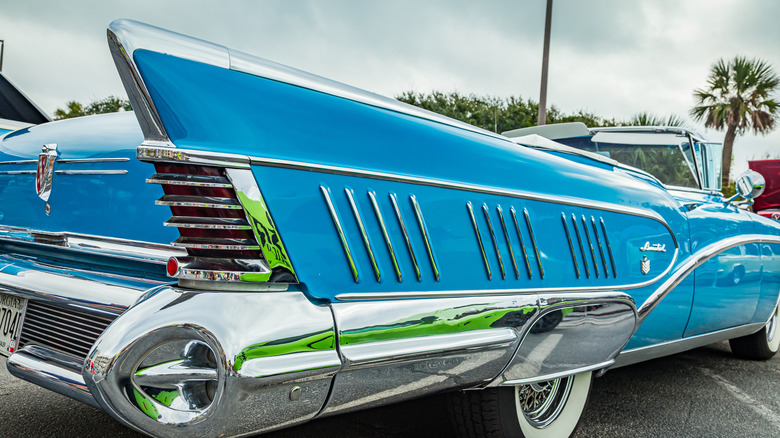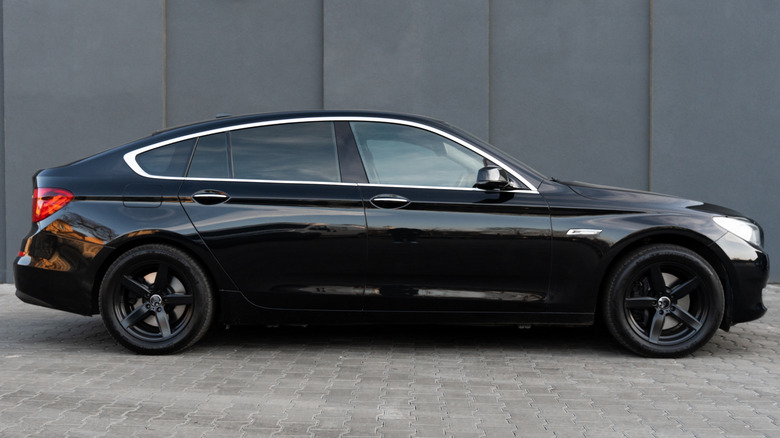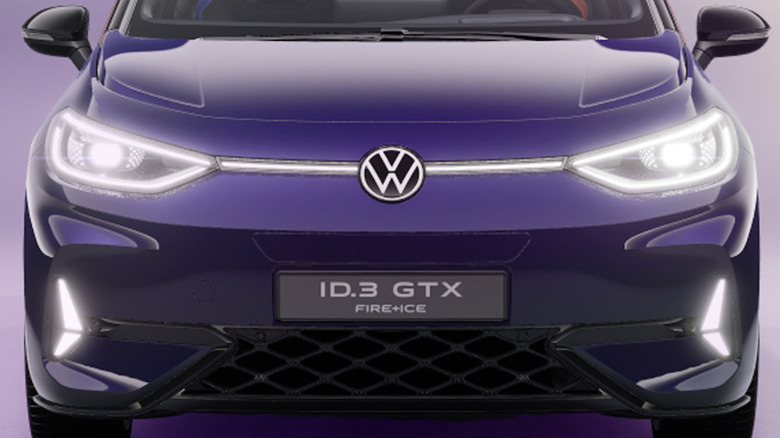Why Modern Cars Are Ditching Chrome (And What Might Replace It)
It's 1958. The U.S. has launched its first satellite, BOAC is flying passengers from London to New York on transatlantic jet flights, and the automobile industry is arguably reaching peak chrome. The future looks bright, and this space-age positivity is reflected in the shiny expanses of chrome that bedeck the Buicks, Cadillacs, and Oldsmobiles rolling off our showroom floors.
Consumer needs and wants, however, change. In the 1960s, vehicle styling veered towards straight lines and minimalism, while in the 70s, fenders and flanks became rippling, rounded, and muscular. By the 80s, the upbeat brightness of chrome had all but faded away — replaced by a set of boxy, rubber-edged, downright dystopian vehicles delivered straight from the Darth Vader museum of designer shame. Nowadays, hard-plated chromium on cars is a rarity. Apart from the occasional silvery plastic nod to its glorious past – a badge, grille trim, or window surround — modern carmakers have all but ditched classic car chrome.
But the disappearance of chrome escutcheons, garnishes, and windsplits from our automobiles cannot entirely be blamed on fashion's fickle ways, or the capricious desires of drivers. Other factors are at play. Highly toxic chemicals are a by-product of the hexavalent chromium plating process, creating a human health hazard that manufacturers have known about for decades. And while the surface of a chromed steel bumper is hard and shiny, it is not so brilliant at protecting vehicle occupants from injury. Unlike rubber, chromework is easily dented in low-speed collisions, and expensive to repair or replace.
Dings, dents, and the green slime of Detroit
The writing is on the wall, and carmakers know it. Chrome plating will soon be banned throughout the automotive industry due to its toxicity. To be clear, it is not chrome-finished parts that are harmful, but rather the byproducts of chrome plating – the same industrial waste at the center of the 2000 movie "Erin Brokovich." In 2019, a mysterious, cancer-causing green slime found oozing onto Interstate 696 in Detroit was traced back to a nearby chrome plating business. As far back as the 1930s, high rates of respiratory cancers were detected in workers handling chrome ore.
Exposure to hexavalent chromium — the carcinogenic form of the metal used in plating — can cause serious harm, including lung cancer and kidney failure, and in 2023, U.S. government agencies moved to ban it, calling it "500 times more toxic than diesel exhaust," and urging plating companies to use less harmful — but duller — trivalent chromium. In Europe, similar moves are afoot, with chrome-plated parts set to go the way of the dinosaur.
It's not the first time chromium, and all its trimmings, has fallen foul of regulators. In 1972, the five-mile-per-hour bumper rule meant automobile lights and safety equipment must withstand impacts at walking pace. Manufacturers began to steer away from chrome steel, taking on black rubber bumper-car strips in the late 70s and 80s before the current design trend took over: large, crumple-zone bumpers of plastic underlaid with styrofoam, painted the same color scheme as the car.
Light is the new chrome
In Europe, the design gurus at Volkswagen are using light as the new chrome, with glowing VW logos and accents on newer models. In a preemptive move in 2024, Stellantis, maker of Jeep, Dodge, Jeep, and Ram, announced it will strip chrome from all its new models. Chief global designer at Stellantis, Ralph Gilles, says trivalent chrome is not an alternative. "The problem is the luster isn't as good," Gilles told CNN. "It has a more yellow kind of finish." Polished stainless steel looks like chrome, but is expensive.
Instead, current design trends are leaning towards "blackout packages," where exterior brightwork is replaced with tones reminiscent of the Batmobile, circa the Dark Knight era. Car enthusiasts' home builds have long used tinted blinkers and lights of murky legal status, black-painted grilles, and powder-coated parts to create their own DIY blackout packages. "They call it 'murdered out' on the street," Gilles explains.
And it's not just VW and Stellantis jumping on the blackout bandwagon, and murdering chrome. Japanese carmakers are promoting chrome-free trim options with seductive monikers like Nissan's Midnight Edition, Toyota's Nightshade Edition, and Kia's Nightfall package. "Chrome peaked in the '50s with the big American land yachts, and stuff with giant chrome bumpers and giant chrome grilles," Gilles says. "They threw as much chrome as they could at it, and we've been weaning ourselves from it."


